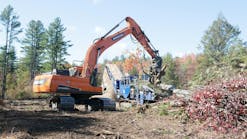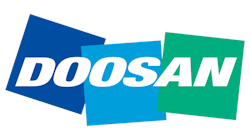The Code of Federal Regulations (CFR) Title 40 Part 63, National Emission Standard for Hazardous Air Pollutants (NESHAP), Subpart ZZZZ is a federal regulation implemented by the Environmental Protection Agency (EPA), which consists of standards for reciprocating internal combustion engines (RICEs). The first version of the regulation implemented requirements for RICEs with output ratings >500 hp, only at facilities designated as Major Sources of Hazardous Air Pollutants (HAPs). The second version of the regulation incorporated RICEs with ratings ≤500 hp at facilities designated as Major Sources, as well as facilities designated as Area Sources with RICEs >500 hp. The last two versions of the regulation implemented requirements for RICEs ≤500 hp at Area Sources. A Major Source of HAPs is a facility with >10 tpy of any single HAP or >25 tpy of combined HAPs, and an Area Source is a facility that isn’t a Major Source (i.e., <10 tpy of any single HAP and <25 tpy of combined HAPs) but does emit HAPs.
South Coast Air Quality Management District (SCAQMD) Rule 1110.2 is the primary air quality regulation for stationary spark-ignition internal combustion engines operated in the South Coast Air Basin. An engine that may be in compliance with SCAQMD Rule 1110.2 may not be in compliance with all of Subpart ZZZZ requirements. Subtle yet very important compliance gaps may exist.
One example of a compliance gap pertains to carbon monoxide (CO) emission limits. For instance, a large nonemergency, spark-ignition RICE >500 hp located at an Area Source of HAPs is required to limit CO emissions to 47 ppmvd (at 15% O2) or reduce CO emissions by 93%. However, Rule 1110.2 has a CO emission limit of 250 ppmvd (at 15% O2) and no control efficiency requirements for this class of engine. The Subpart ZZZZ emission limits are much lower in this case.
Another example of a compliance gap pertains to formaldehyde emissions.
For instance, a large non-emergency, spark-ignition RICE >500 hp located at an Area Source of HAPs is required to limit formaldehyde emissions to 2.7 ppmvd (at 15% O2) or reduce it by 76%. However, Rule 1110.2 has no formaldehyde requirements for this same class of engine. Subpart ZZZZ does allow for several alternative compliance demonstrations for the formaldehyde limits, including the reduction of total hydrocarbon emissions by 30% or reducing the CO emissions by 70%.
In this case, Rule 1110.2 is less restrictive and thus leaves a potential important compliance gap between SCAQMD and EPA requirements.
In addition to the differences in emission limits, most subject RICEs, including emergency standby engines, have additional operational and maintenance requirements. For emergency diesel engines, the operational limits include minimizing the engine’s time spent at idle and the engine’s startup time to a period needed for appropriate and safe loading of the engine, not to exceed 30 minutes.
Maintenance requirements include changing the oil and filter every 500 hours or annually, inspecting the air cleaner every 1,000 hours or annually, and replacing as necessary and inspecting all hoses and belts every 500 hours or annually. In lieu of periodic oil changing, the operator may utilize an oil analysis program. Recordkeeping involves recording the maintenance events.
Air Quality Tip For a Permit to Construct (PTC) that requires initial emissions testing, the source testing is to be completed within the time period stated in the permit.
For the SCAQMD, the startup period starts after the equipment has commenced any operation. Facilities requiring additional time for a startup period longer than allowed by the PTC should contact the District to obtain approval for extension, if allowed.
SCAQMD ADOPTED RULE CHANGES For full details on changes below, go to: http://www.aqmd.gov/home/regulations/rules/re cent-actions  Rule 1146: Emissions of Oxides of Nitrogen from Industrial, Institutional, and Commercial Boilers, Steam Generators, and Process Heaters SCAQMD Rule 1146 sets forth emission standards for oxides of nitrogen (NOx) and CO emissions from boilers and heaters. The rule also sets forth requirements for source testing, periodic monitoring, and recordkeeping requirements. Last November (2013), the SCAQMD revised Rule 1146 with several administrative updates. On the surface, the revisions appeared to be minor in nature. However, upon closer inspection, one of the modifications changes an important source testing frequency requirement.
Originally, Rule 1146(d)(9) gave the equipment operator the option of performing a periodic emission check with a portable analyzer “or” performing a full compliance source test (once every 3 or 5 years, depending) to demonstrate compliance with the CO emission limits.
However, the amended rule now states “and” instead of “or.” For Regional Clean Air Incentives Market (RECLAIM) facilities, which are exempt from the NOx portions of Rule 1146 but must comply with the CO portion of the rule, if they currenly comply using their RECLAIM required source testing events, the change appears to require monthly or quarterly portable analyzer testing as well as a full source test. This requirement is not something that was previously specified by the rule, and many facilities may not be aware of this subtle but important rule change, which now requires both handheld monitoring and periodic source testing.
The SCAQMD has reviewed the impact of the new language on RECLAIM facilities. On August 26th, they issued an advisory that states, “Owners or operators of RECLAIM sources subject to Rule 1146 or 1146.1 are only required to measure CO emissions by a source test or with portable analyzers.”
RECLAIM facilities may want to consult with their SCAQMD inspector to see if this advisory applies to their operations. Please note that some facilities have a permit condition for source testing and should continue to comply with their condition(s) regardless of the applicability of the advisory, unless a change of condition is granted.
SCAQMD PROPOSED RULE CHANGES For full details on changes below, go to: http://www.aqmd.gov/home/regulations/rules/pr oposed-rules
Regulation XX: NOx RECLAIM
The SCAQMD NOx RECLAIM Working Group has met several times this year, most recently on July 31st.
The SCAQMD staff have evaluated Best Achievable Retrofit Control Technology (BARCT) for many categories of RECLAIM sources to evaluate the Technical Feasibility and Cost Effectiveness of emission reductions for those categories. This effort has been undertaken to determine the Air Quality Management Plan’s reduction to allocations provided to RECLAIM facilities to cover their NOx emissions.
For example, they have recently completed the analyses for refinery and non-refinery equipment, including internal combustion engines, gas turbines, furnaces, etc. With each of these evaluations, they have determined the amount of emissions that could be reduced in a cost-effective manner.
From their analysis, they have concluded that, for the Refinery Sector, where the 2011 emissions were 11.5 tons NOx per day, the 2023 emissions at 2014 BARCT should be 2.56 tons NOx per day. Thus, close to a 9 ton/day reduction by comparison.
For the remaining RECLAIM facilities, the SCAQMD has concluded that, where the combined 2011 emissions were 8.51 tons NOx per day, the 2023 emissions at 2014 BARCT should be 8.77 tons NOx per day. Thus, it appears that no reduction is needed, with no new BARCT adjustment proposed for power plants due to reductions from repowering projects and/or New Source Review. However, the shave takes into account the allocations for all RECLAIM facilities combined, which broadens the gap by 6.5 tons/day.
Based on these calculations, the total shave needed is estimated as the difference between the current RECLAIM Trading Credit (RTC) holdings of 26.5 tons/day and the 2023 emissions at 2014 BARCT (13.56 tons/day), including a growth factor of roughly 10% and an allowance for new facilities. Thus, the current overall reduction (shave) proposed is 12.94 tons/day (approximately 50%) as discussed on July 31st.
The District is now evaluating the shave methodology, such as an acrossthe- board shave for all NOx RECLAIM facilities, or weighted to industry categories with high reduction potential and sufficient RTC holdings, or potentially other methodologies.
The proposed timing is to adopt the rule incorporating the shave by March 2015, with implementation between 2017 and 2020, pending the District’s completion of their analysis.
Yorke Engineering, LLC specializes in air quality and environmental consulting for stationary and mobile sources, including dispersion modeling, health risk assessments, permitting, emission inventories, air quality compliance systems, etc. Yorke Engineering has assisted over 400 customers, including a wide variety of industrial facilities and government organization


